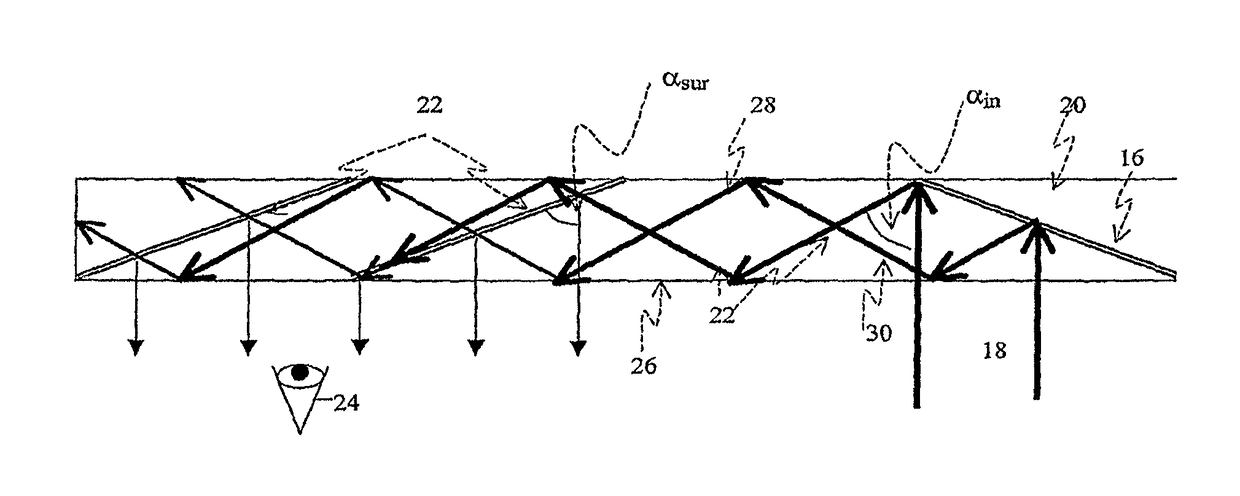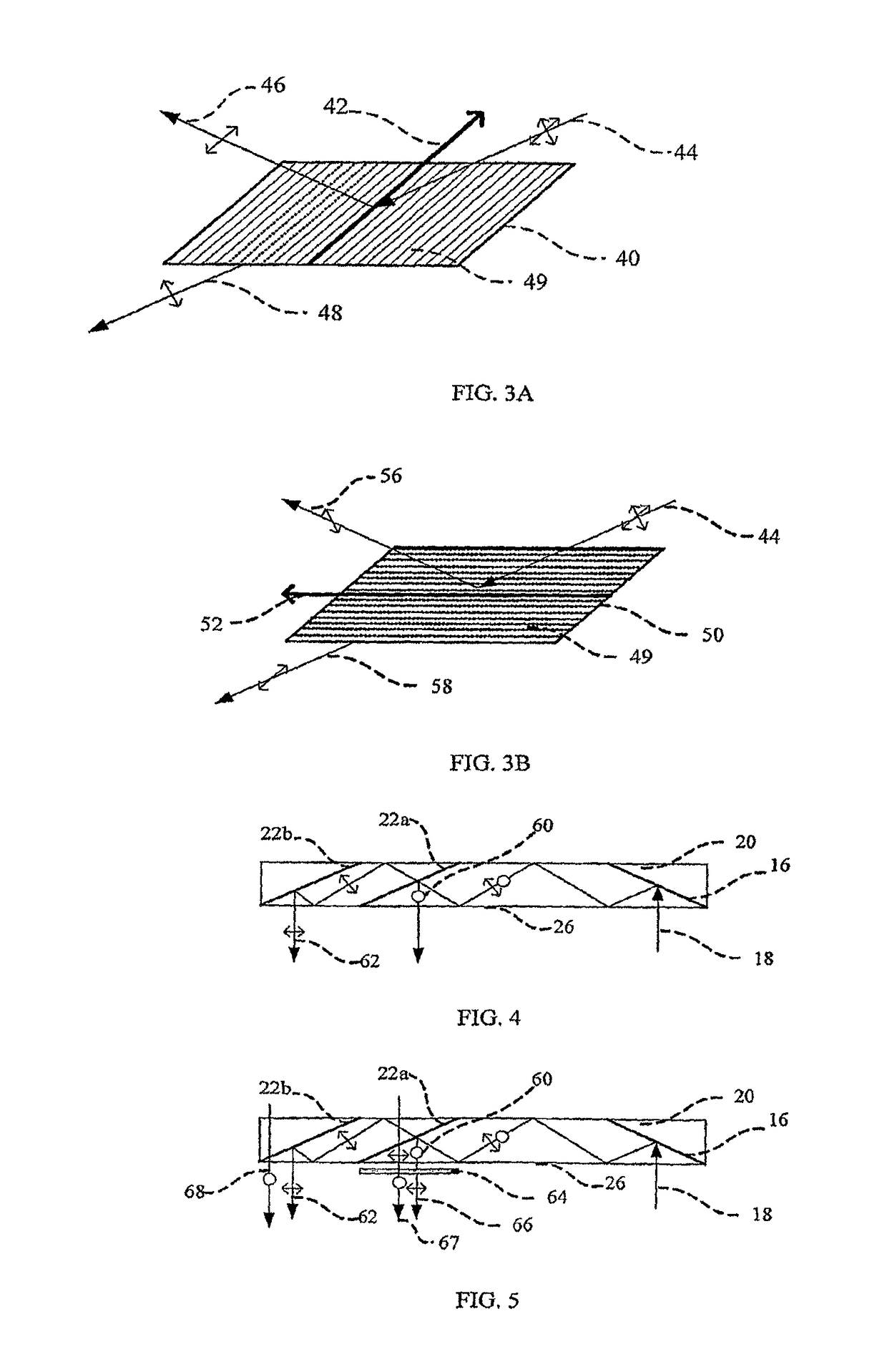Substrate-guide optical device
a technology of optical devices and substrates, applied in the direction of polarising elements, instruments, spectales/goggles, etc., can solve the problems of inconvenient installation, unsafe use, and state-of-the-art huds, and achieve large eye-motion-box values, facilitate design and fabrication, and easy incorporation
- Summary
- Abstract
- Description
- Claims
- Application Information
AI Technical Summary
Benefits of technology
Problems solved by technology
Method used
Image
Examples
Embodiment Construction
[0053]FIG. 1 illustrates a prior art folding optics arrangement, wherein the substrate 2 is illuminated by a display source 4. The display is collimated by a collimating lens 6. The light from the display source 4 is coupled into substrate 2 by a first reflecting surface 8, in such a way that the main ray 10 is parallel to the substrate plane. A second reflecting surface 12 couples the light waves out of the substrate and into the eye 14 of a viewer. Despite the compactness of this configuration, it suffers significant drawbacks; in particular only a very limited FOV can be affected. As shown in FIG. 1, the maximum allowed off-axis angle inside the substrate is:
[0054]αmax=arctan(T-deye2l),(1)
wherein T is the substrate thickness;
[0055]deye is the desired exit-pupil diameter, and
[0056]l is the distance between reflecting surfaces 8 and 12.
[0057]With angles higher than αmax, the rays are reflected from the substrate surface before arriving at the reflecting surface 12. Hence, the re...
PUM
| Property | Measurement | Unit |
|---|---|---|
| distance | aaaaa | aaaaa |
| distance | aaaaa | aaaaa |
| distance | aaaaa | aaaaa |
Abstract
Description
Claims
Application Information
 Login to View More
Login to View More - R&D
- Intellectual Property
- Life Sciences
- Materials
- Tech Scout
- Unparalleled Data Quality
- Higher Quality Content
- 60% Fewer Hallucinations
Browse by: Latest US Patents, China's latest patents, Technical Efficacy Thesaurus, Application Domain, Technology Topic, Popular Technical Reports.
© 2025 PatSnap. All rights reserved.Legal|Privacy policy|Modern Slavery Act Transparency Statement|Sitemap|About US| Contact US: help@patsnap.com



